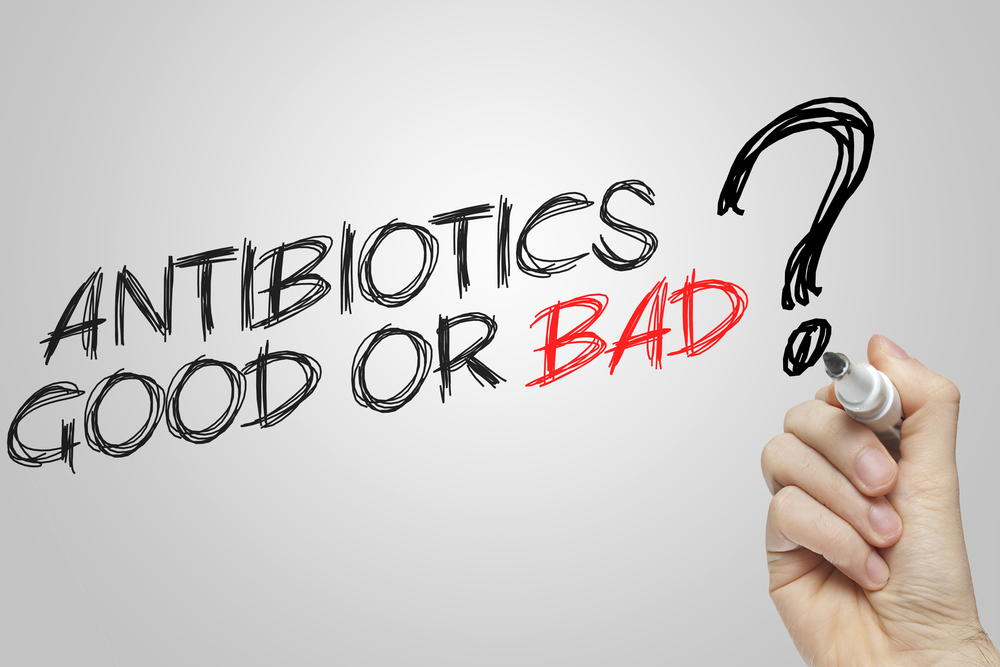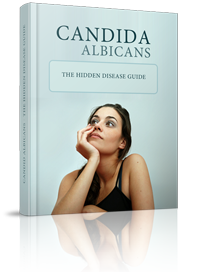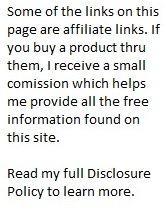Candida FAQ
This is the Candida FAQ for Candida-Albicans-Cure.com. We are constantly receiving questions from our visitors. We gathered up the most frequently asked questions and posted them here. Hopefully this FAQ will answer many of your questions as well.
Candida FAQ
Can't find the answer to your question? Please contact us and we will get back to you as soon as possible. We will also post your question here so others can benefit from it.
If you would like a step by step checklist for treating your Candida overgrowth, you can find it in the book "Candida Albicans - The Hidden Disease".
Candida
Candida Diet
- So many foods are not allowed on the Candida Diet. What can I eat?
- I am having a hard time sticking to the Candida Diet. How can I stay on the Candida Diet?
- Is cinnamon allowed on the Candida Diet?
- Are sweet potatoes allowed on the Candida Diet?
- Is coconut flour allowed on the Candida Diet?
- Is orange juice allowed on the Candida Diet?
- Are eggs allowed on the Candida Diet?
- Is black tea allowed on the Candida Diet?
- Is coffee allowed on the Candida Diet?
- Is vodka allowed on the Candida Diet?
- Are whole grains allowed on the Candida Diet?
- Is brown rice allowed on the Candida Diet?
- Is milk allowed on the Candida Diet?
- Is butter allowed on the Candida Diet?
- Are lemons and limes allowed on the Candida Diet?
- Are berries allowed on the Candida Diet?
- What do you suggest for breakfast?
- The Candida Diet states that I should avoid peanuts and peanut butter. Does this mean I should avoid organic peanuts as well?
- Is fruit allowed on the Candida Diet?
Probiotics
- Can I eat yogurt instead of taking pills?
- What brand of yogurt do you recommend?
- Do you recommend flavored kefir?
- What are the side effects of probiotics?
- Are probiotics good for indigestion or can it make it worse?
Causes
Related Conditions
Candida Treatments
Newsletter
Candida
Q. How long does it take to get rid of Candida?
A. The length of time needed to cure Candida depends on two things: how long you have had a Candida overgrowth and which treatment you choose.
If you choose to see a doctor and get a prescription for an anti-fungal medicine, it will usually take 1-2 months.
If you choose to use a Natural Candida Cure, the average time is one month for every year that you have had a Candida overgrowth.
Q. Where can I find a qualified local doctor?
A. You can search for a qualified local doctor on the Candida Test page.
Another way to find an alternative medicine physician is to visit the local health food store and ask the owner. Most likely other customers have discussed their physicians with the owner at one time or another.
Candida Diet
Q. So many foods are not allowed on the Candida Diet. What can I eat?
A. One great source of recipes for the Candida Diet is the Yeast Connection Cookbook by William G Crook.
Another great source of recipes is The Body Ecology Living Cookbook.
If you ease into the diet, it will not be as difficult. Any sudden change to your diet can be difficult to stick with for more than a week or two. Ease into it and you will have no trouble sticking with for the length of time necessary to kick this thing!
Q. I struggle with the diet so much. I can't seem to quit sabotaging myself. My doctor is doing everything he can, but if I keep destroying myself with the foods I have no hope. Do you know of anything that would help me to overcome this desire for sugar?
A.
Many people struggle with the Candida Diet at first. The main reason is that the Standard American Diet has so much sugar in it. You literally become addicted to sugar. One of the best ways to overcome this addiction is through hypnosis. I personally used hypnosis to overcome my addiction to cigarettes after smoking for more than 10 years.
You can find a local hypnotherapist in your local yellow pages or you can use hypnosis CDs in your home. One brand of hypnosis CDs that visitors to my website have had luck with is from Hypnosis Network. Their hypnosis CDs are created by world-renowned hypnotist and psychotherapist Roberta Temes. She has a Ph.D. in Counseling Psychology. The CDs are based on wieghtloss but one of the key factors in weightloss is breaking your addiction to sugar.
Another option is to use an herb called Gymnema Sylvestre. Gymnema Sylvestre works by temporarily neutralizing the sweet taste receptors on the tongue so you cannot taste the sugar in any food. If you eat something containing any type of sugar after taking Gymnema Sylvestre, it won’t taste sweet and you won’t want to eat it. You will immediately lose your cravings and desire for sweet foods.
Q. Is cinnamon allowed on the Candida Diet?
A. Cinnamon is excellent to use during the Candida Diet because it has antifungal properties. Add it to anything and everything.
Q. Are sweet potatoes allowed on the Candida Diet?
A. Sweet potatoes are allowed on the Candida Diet. They do not feed the Candida like a white potato does. Just stay away from candied sweet potatoes because of the sugar.
Q. Is coconut flour allowed on the Candida Diet?
A. Coconut flour is excellent as well. You can make many foods with it but avoid using any recipes with yeast in them.
Q. Is orange juice allowed on the Candida Diet?
A. Orange juice (like all fruit juices) contains high amounts of sugar so it should be avoided.
Q. Are eggs allowed on the Candida Diet?
A. Eggs are an excellent choice on the Candida Diet. Organic, free range eggs are preferred because cheap supermarket eggs are from chickens fed grains and antibiotics.
Q. Is black tea allowed on the Candida Diet?
A. Black tea is fine as long as you only use Lakanto, Stevia or Xylitol for sweetening. Green tea would be preferred as it has healing properties.
Q. Is coffee allowed on the Candida Diet?
A. Coffee is fine as long as you only use Lakanto, Stevia or Xylitol for sweetening. Green tea would be preferred as it has healing properties.
Q. Is vodka allowed on the Candida Diet?
A. Vodka (like all alcohol) quickly turns to sugar in the blood so it should be used very sparingly. Do some research and find a brand that is made without the use of yeast. There are a few brands on the market made that way.
Q. I hear that whole grains are essential to health. Should I be eating whole grains?
A. The simple answer is no - you should not eat any whole grain wheat flour while on the Candida Diet. You can live a long healthy life without eating a single grain as they are not needed by the human body.
Most recipes are designed around wheat flours so it may be difficult to convert them to the non-grain alternatives without doing some experimentation. A couple of great source of recipes for the Candida Diet is the Yeast Connection Cookbook by William G Crook and The Body Ecology Living Cookbook by Donna Gates.
Q. Is brown rice allowed on the Candida Diet?
A. There are some sites that allow brown rice or other types of grains on their Candida Diets. However my research points to the fact that ALL grains feed the Candida so they are to be avoided. You can live a long healthy life without eating a single grain as they are not needed by the human body.
Q. Is milk allowed on the Candida Diet?
A. Milk is usually not a problem for someone with a Candida overgrowth. The best type of milk is raw unpasteurized milk. The second best is whole, pasteurized milk from grass-fed cows.
The least preferred option is the typical milk you buy at the local store. It is usually from grain fed cows that have been given antibiotics and growth hormones. The grain that the cows eat can feed Candida, the antibiotics can be transferred to you killing of your good bacteria and the growth hormones can lower your bodies immunity. This milk can definitely cause problems with a Candida overgrowth so it should be avoided.
Sales of raw milk are legal in 28 out of 50 US states. In some of the remaining states raw milk is available through cow share programs. You pay the farmer a rental fee and he provides you with the milk. You can find a local supplier at www.realmilk.com.
Another good option is hemp milk. It is very similar to soy milk. Soy milk has a chemical in it that mimics estrogen and excessive use has been linked to cancer so it should be avoided.
Q. Is butter allowed on the Candida Diet?
A. All dairy products are acceptable on the Candida Diet. One thing to look for is raw, unpasteurized, grass fed dairy. Raw milk is not legal for sale in most states but you can find a farmer near you that has a "cow share" program. Go to www.realmilk.com to find local suppliers.
Q. Are lemons and limes allowed on the Candida Diet?
A. Lemons and limes are high in sugars but they also contain chemicals that fight Candida. Most people can tolerate citrus but some cannot. Test them in your diet and see if they cause the Candida to flare up. If not you should be able to tolerate them.
Q. Are berries allowed on the Candida Diet? I really like strawberries, blueberries, cherries, raspberries, blackberries, elderberries and others.
A. Even though berries contain natural sugars, they also contain natural antifungal compounds. So keep eating the berries - especially organic ones. Some berries are high in pesticides so they may do more harm than good. See the pesticides page for more details.
Q. What do you suggest for breakfast? I normally have oatmeal with walnuts and berries.
A. There are many options available for breakfast meals. The first thing is not to give up your berries. Even though berries contain natural sugars, they also contain natural antifungal compounds. So keep eating the berries - especially organic ones. Some berries are high in pesticides so they may do more harm than good. See the pesticides page for more details.
There are several non-grain alternatives for breakfast - amaranth, buckwheat, quinoa (pronounced keen-wa),
and teff. You can make hot puddings with quinoa, amaranth and
buckwheat. You can make cooked quinoa or teff. You can make pancakes
or waffles from quinoa, amaranth and buckwheat. You can make fried mush
with your leftover hot pudding.
My favorite cold cereal is Q'ia. It is a mixture of chia seeds, buckwheat groats and hemp seeds.
You can fix meat or fish and vegetables. You can eat soup or any other
meal that you would normally eat at other times of the day. You can
find many tasty recipes in the Yeast Connection Cookbook by William G Crook.
The most important thing is to eat a large breakfast. This may be unusual for you but nearly every expert agrees that breakfast is the most important meal of the day. A breakfast high in protein will give you energy that will last through the day!
Several sources of quality breakfast proteins are:
Q. The Candida Diet states that I should avoid peanuts and peanut butter. Does this mean I should avoid organic peanuts as well?
A. Even organic peanuts can and will have mold on them so they are to be avoided as well. There is one brand of peanut butter, Trader Joes, that uses Valencia peanuts that should be safe. The Valencia peanuts grow only in extremely dry climates that are not conducive to mold growth.
Another way to get your peanut butter fix is to use a different nut butter. They make nut butters from almonds, cashews, walnuts, hazelnuts, macadamia nuts, sesame seeds, pumpkin seeds and sunflower seeds. My personal favorite is the cashew butter - especially on a stalk of celery!
You can find nut butters at most health food stores or online. One place to order nut butters online is Sun Organic Farm. Their nut butter page is found here.
One thing to look for in your nut butters is added peanut oil. It is sometimes added to make a dry nut butter smoother and creamier. The problem is the fungal toxins from the peanuts are added as well so it is not any healthier than pure peanut butter.
Q. Is fruit allowed on the Candida Diet?
A. You should avoid all fruit while on the Candida Diet - with a two notable exceptions. The fruits that are allowed on the Candida Diet are green apples and berries. Virtually all berries are allowed since they are high in natural anti-fungals.
Probiotics
Q. I don't like to take pills. Can I get probiotics from yogurt instead?
A. Most yogurt has added sugar and is low in active cultures. You can culture your own yogurt or find a sugar free brand that is high in active cultures.
Q. Many yogurts like Activia, Olympia and others contain live cultures. Which brand do you recommend?
A. Nearly all flavored yogurt contains sugar or artificial sweeteners so they should be avoided.
One purchased yogurt I have found suitable is the unflavored Dannon brand. I buy it by the quart and add berries to it for flavor.
Another good option is to make your own. Kefir is drinkable yogurt. I like the kefir starter kit from Body Ecology.
Q. What are the side effects of probiotics?
A. For the most part probiotics are well tolerated. The most noticeable effect will be some changes in your digestion. Your stools may become looser, sometimes they become more firm. Some people experience gas or bloating.
All side effects are usually attributed to the die-off of the foreign invaders and will decrease with time. If the effects are too drastic to be tolerated, decrease the dosage until they go away. Then increase the dosage up to the recommended amount again.
Q. Do you recommend flavored kefir?
A. Kefir is an excellent source of natural probiotics which will help kill the Candida. One thing to watch for with flavored kefir is added sugar. The sugar counteracts the benefits of the kefir so it should be avoided.
You can make your own kefir easily. Go to bodyecology.com for more details and to get a kefir starter kit.
Q. Are probiotics good for indigestion or can it make it worse?
A. Probiotics will usually cure indigestion in a short time. Probiotics cure most digestive problems as they are almost all related to a bacteria imbalance.
Causes
Q. Where can I find a holistic dentist in the United Kingdom?
A. I have no personal knowledge of any dentists in the United Kingdom but I did an online search and came up with one possibility. Check out this website for some suggestions - Dentists, Dental Groups, & Dental Screening.
Treatments
Q. I have been reading about the benefits of Virgin Coconut Oil. Wouldn't Organic Coconut Oil be just as good? What is the difference in it's effect on the body?
A. Virgin Coconut oil does have many health benefits, especially for someone with a Candida overgrowth. However there is a difference between Virgin Coconut Oil and Organic Coconut Oil. Nearly all Virgin Coconut Oil is organic but not all Organic Coconut Oil is virgin.
Some Organic Coconut Oil is refined which removes the coconut flavor. This can be a good thing if you do not like the coconut flavor. However, it also removes some beneficial compounds that your body needs. If you wish to buy Organic Coconut Oil, make sure you buy the unrefined style as it still has all of the beneficial compounds of the coconut.
To recap, you should buy either Virgin Coconut Oil or unrefined Organic Coconut Oil. The brand I prefer is Carrington Farms Extra Virgin Coconut Oil.
Related Conditions
Newsletter
Home > Candida FAQ






New! Comments
Have your say about what you just read! Leave me a comment in the box below.